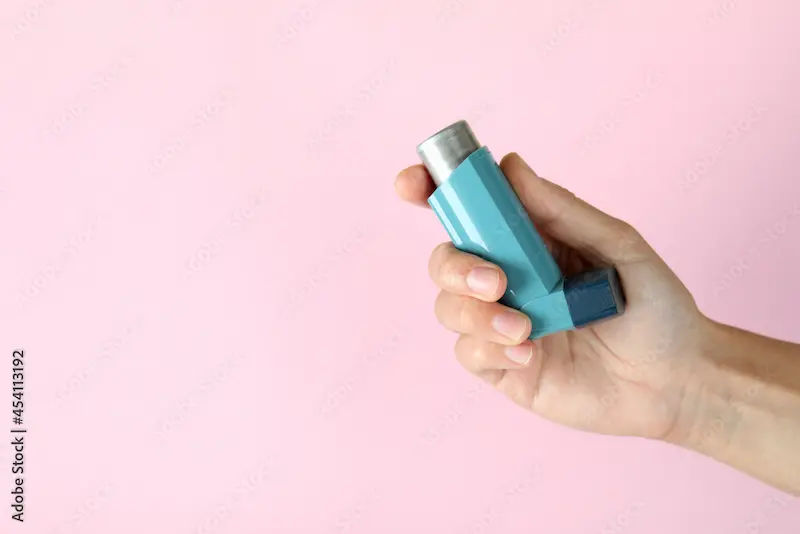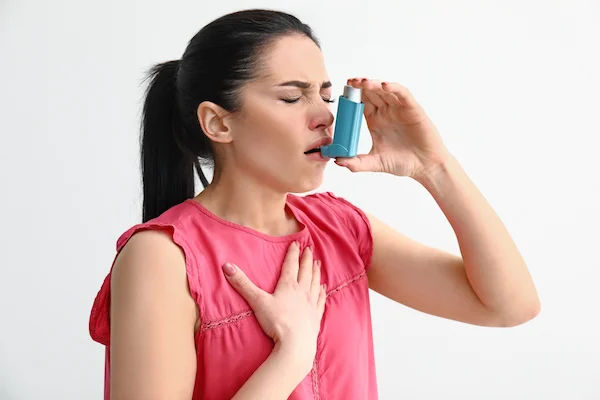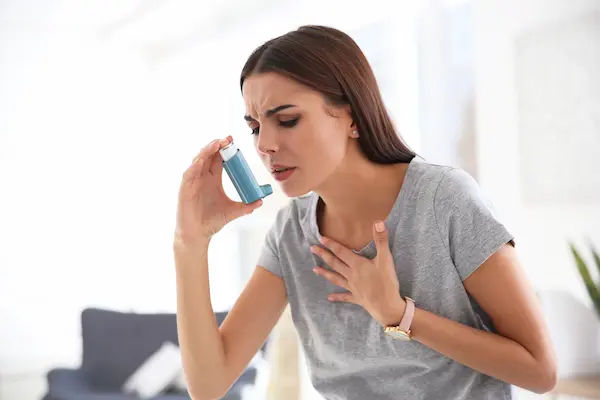Guide to Asthma In Adults And Children
Learn how to manage asthma in adults and children with our comprehensive guide. Understand symptoms, triggers, treatments, and lifestyle tips for better breathing and a healthier life.


Introduction
Living with asthma can feel like navigating a maze, whether you're an adult recently diagnosed or a parent caring for a child with the condition. This chronic respiratory issue affects millions worldwide, but with the right knowledge and tools, it doesn't have to limit your life. This guide delves deep into the world of asthma in adults and children, breaking down everything from the basic biology of an attack to the nuanced differences between pediatric and adult-onset cases. We'll explore common triggers, demystify diagnosis and treatment options, and provide practical strategies for daily management. Our goal is to empower you with the information needed to breathe easier and take confident control of your or your child's health. If your symptoms are persistent, consulting a doctor online with Apollo24|7 can be a great first step toward a personalized management plan.
What is Asthma? Understanding the Chronic Condition
Asthma is a chronic condition that affects the airways in the lungs, causing them to become inflamed and narrowed. Think of your airways as tiny branches on a tree. In someone with asthma, these branches are perpetually irritated and sensitive. When exposed to certain triggers, they overreact: the muscles around the airways tighten (bronchospasm), the lining of the airways swells, and often, extra mucus is produced. This combination of factors makes it difficult for air to flow in and out, leading to the characteristic symptoms of an asthma attack.
It's crucial to understand that asthma is a long-term disease. While there is currently no cure, it is highly manageable. With proper treatment, people with asthma can lead completely normal, active lives.
The Mechanics of an Asthma Attack
An asthma attack isn't an instantaneous event; it's a cascade of reactions. It begins with exposure to a trigger. For example, a child allergic to dust mites inhales them. This causes immune cells in the airways to release inflammatory substances like histamine. These chemicals lead to the three key changes: swelling of the airway lining, muscle tightening, and mucus production. The airway narrows significantly, and the individual experiences a feeling of chest tightness and struggles to breathe, particularly to exhale. This is why wheezing—a whistling sound during breathing—is a common sign.
Consult Top Specialists
Asthma Symptoms: Recognizing the Signs in Adults and Children
Recognizing the symptoms of asthma is the first step toward diagnosis and management. While the core symptoms are similar, how they present can vary, especially in young children.
Common Symptoms Shared by All
The most common signs of asthma include:
Coughing: Often worse at night or early morning, or triggered by exercise/cold air.
Wheezing: A whistling or squeaky sound when breathing.
Shortness of breath: A feeling of not being able to get enough air.
Chest tightness: Often described as a heavy weight on the chest.
Unique Symptoms and Presentations in Children
Diagnosing asthma in children, especially those under 5, can be challenging. They can't always describe how they feel. Look for signs like:
Fatigue during play: Your child may tire more easily than their peers.
Difficulty sleeping due to coughing or breathing problems.
Recurrent bronchitis or prolonged recovery from colds.
A persistent, rattling cough that doesn't respond to typical cold medicines.
How Adult-Onset Asthma Can Differ
Adult-onset asthma often presents with a persistent cough as the primary symptom, sometimes without the classic wheezing. It is more common in women and can be triggered by factors like hormonal changes, allergens in the workplace, or even illnesses like the flu. Adults who develop asthma may have a slower response to treatment than children, making consistent management vital.
Common Asthma Triggers: What Sets Off an Attack?
Identifying and avoiding triggers is a cornerstone of asthma management. Triggers vary from person to person.
Allergens (Pollen, Dust Mites, Pet Dander)
Allergic asthma is the most common type. When the immune system overreacts to a harmless substance, it can trigger airway inflammation. Common culprits include tree and grass pollen, mold spores, cockroach droppings, and dust mites—microscopic creatures living in bedding and upholstery.
Irritants (Smoke, Pollution, Strong Smells)
Even if you're not allergic, irritants can inflame sensitive airways. Tobacco smoke is a major trigger. Others include air pollution, chemical fumes, perfumes, and household cleaning sprays.
Other Triggers (Exercise, Cold Air, Stress)
Exercise-induced bronchoconstriction (EIB) is very common. The rapid breathing of cold, dry air during activity can cause airway narrowing. Similarly, breathing in cold winter air can be a trigger. Strong emotions and stress, which lead to rapid breathing, can also precipitate symptoms.
How is Asthma Diagnosed?
A proper diagnosis is essential for effective treatment. If you suspect you or your child has asthma, a doctor will use several tools.
Diagnosis in Adults: Spirometry and Beyond
For adults, the gold standard is a spirometry test. You blow into a device that measures how much air you can exhale and how quickly. The doctor may perform the test before and after giving you a bronchodilator medication to see if your lung function improves. They will also take a detailed medical history and may suggest allergy testing.
The Challenges of Diagnosing Asthma in Young Children
Young children often cannot perform spirometry reliably. Diagnosis in this group relies heavily on the doctor's assessment of symptoms, family history, and the child's response to a trial of asthma medication. If the symptoms improve with medication, it supports an asthma diagnosis.
Asthma Treatment and Management: A Dual Approach
Treatment for asthma involves two main types of medication, used in tandem to control the condition.
Quick-Relief Medications (Rescue Inhalers)
Everyone with asthma should have a quick-relief inhaler (like albuterol). These medications work within minutes to relax the tightened muscles around the airways, providing immediate relief during an asthma attack. They are not for daily use; frequent reliance indicates poor control.
Long-Term Control Medications (Preventer Inhalers)
These are the cornerstone of management for persistent asthma. Inhaled corticosteroids (e.g., fluticasone) are taken daily to reduce the underlying inflammation in the airways, making them less sensitive to triggers. It's crucial to use these as prescribed, even when feeling well.
The Crucial Role of an Asthma Action Plan
A written asthma action plan, created with your doctor, is a powerful tool. It provides clear, personalized instructions on what medications to take daily, how to recognize worsening symptoms, and when to seek emergency help. This plan empowers patients and parents to take decisive action.
Living Well with Asthma: Daily Management Strategies
Beyond medication, lifestyle adjustments are key to reducing flare-ups and maintaining a high quality of life.
Creating an Asthma-Friendly Home
Reduce Dust Mites: Use allergen-proof mattress and pillow covers, wash bedding weekly in hot water, and vacuum regularly with a HEPA filter.
Control Pet Dander: Keep pets out of bedrooms and off furniture.
Prevent Mold: Fix leaks, use dehumidifiers in damp areas, and clean visible mold promptly.
Exercise and Asthma: Staying Active Safely
Exercise is encouraged! The key is management. Use your reliever inhaler 15-20 minutes before exercise as a preventive measure. Choose activities with warm, humid environments (like swimming) or ensure a proper warm-up and cool-down. If symptoms of exercise-induced asthma occur, stop and use your reliever.
Key Differences: Childhood Asthma vs. Adult-Onset Asthma
Understanding these differences can shape expectations and treatment approaches.
Onset: Childhood asthma is often linked to allergies and may improve or disappear during teenage years (though it can return). Adult-onset asthma is less allergy-driven and is typically a lifelong condition.
Airway Damage: Adults may have fixed airway narrowing due to years of untreated inflammation or smoking, making treatment more complex.
Response to Treatment: Children often respond more quickly and effectively to inhaled steroids.
When to Seek Emergency Help for an Asthma Attack
It's vital to know the signs of a severe attack that requires immediate medical attention:
Rapid worsening of shortness of breath or wheezing.
No improvement after using a quick-relief inhaler.
Shortness of breath while speaking only a few words.
Lips or fingernails turning blue (cyanosis).
If you experience any of these, seek emergency care immediately.
Quick Takeaways: Key Points to Remember
Asthma is manageable: With the right treatment, you can live a full, active life.
Know your triggers: Identifying and avoiding them is half the battle.
Use medications correctly: Understand the difference between your daily controller and your rescue inhaler.
Have an action plan: A written plan from your doctor provides clarity and confidence.
Don't ignore symptoms: Early intervention prevents severe attacks.
Communication is key: Regularly update your doctor on your condition. If managing your asthma becomes difficult, consult a doctor online with Apollo24|7 to adjust your plan.
Conclusion
Navigating life with asthma, whether for yourself or your child, is a journey of awareness and proactive management. This guide has equipped you with a foundational understanding of the condition, from its mechanisms to daily coping strategies. Remember, the goal is not just to treat attacks but to prevent them from happening in the first place through consistent care and a strong partnership with your healthcare provider. By understanding your triggers, adhering to your medication plan, and knowing when to seek help, you can take full control. Asthma is a part of your life, but it doesn't have to define it. Embrace the strategies outlined here, and breathe easy knowing you are empowered to manage your health effectively.
Consult Top Specialists
Consult Top Specialists

Dr. Syed Ismail Ali
General Practitioner
7 Years • MBBS
Hyderabad
Apollo 24|7 Clinic, Hyderabad

Dr Syed Mateen Pasha
General Physician
2 Years • MBBS
Bengaluru
PRESTIGE SHANTHINIKETAN - SOCIETY CLINIC, Bengaluru

Dr. Anand Ravi
General Physician
2 Years • MBBS
Bengaluru
PRESTIGE SHANTHINIKETAN - SOCIETY CLINIC, Bengaluru

Dr. Harshendra Jaiswal
General Physician/ Internal Medicine Specialist
12 Years • MBBS , MD (General medicine)
Kolkata
108 DHANA DHANVANTARI Clinic, Kolkata
(25+ Patients)
Dr. Thandra Ramoji Babu
General Physician/ Internal Medicine Specialist
5 Years • MBBS, DNB(General Medicine)
Warangal
Sai Ram multi-specialty hospital, Warangal
More articles from Asthma
Frequently Asked Questions
1. Can asthma go away?
In some children, asthma symptoms can lessen or disappear during adolescence. However, the underlying tendency for inflamed airways often remains, and symptoms can return later in life. Adult-onset asthma is generally a lifelong condition that requires ongoing management.
2. What is the best inhaler for asthma?
There is no single 'best' inhaler. The right one depends on the type and severity of your asthma, your age, and your ability to use the device correctly. Your doctor will prescribe a combination of a long-term control inhaler and a quick-relief inhaler tailored to your needs.
3. Are there natural remedies for asthma symptoms?
While some lifestyle changes like breathing exercises (e.g., Buteyko method) can help manage stress and improve technique, they should never replace prescribed medication. Always discuss any complementary therapies with your doctor to ensure they are safe and appropriate for your asthma management plan.
4. How can I tell if my child's cough is asthma?
A cough caused by asthma is often persistent, worsens at night or with activity, and may be accompanied by wheezing or shortness of breath. If your child has a cough that lingers long after a cold is gone or is triggered by laughing or running, it's important to have them evaluated by a pediatrician.
5. Is it safe to exercise if I have asthma?
Absolutely. In fact, regular exercise is beneficial for lung health. The key is to have your asthma well-controlled. Using your reliever inhaler before exercise and choosing suitable activities can prevent exercise-induced asthma and allow you to stay active safely.




